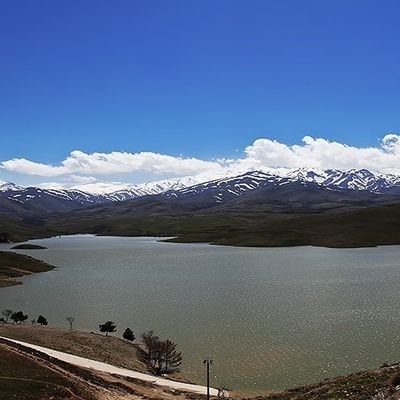SAEDNEWS: New Year’s celebrations vary across cultures, blending centuries-old traditions with modern-day festivities. From fireworks to symbolic foods, these customs offer insight into how different societies welcome a fresh start each year.

According to SAEDNEWS, though New Year’s Day is universally recognized as the start of a new year, the ways in which it is celebrated differ widely across cultures. From fireworks to feasts, each country has its own unique traditions and practices, often linked to historical, cultural, and religious significance. Understanding these variations not only highlights cultural diversity but also reflects shared human experiences of renewal and hope.

In many Western countries, New Year’s Eve is marked by lively parties, fireworks, and countdowns to midnight. In the United States, Times Square in New York City hosts one of the most iconic events, where people gather to watch the famous ball drop. This tradition symbolizes the closing of the old year and the welcoming of the new one.
Across Europe, cities like London and Paris also showcase grand fireworks displays over landmarks such as the London Eye and the Eiffel Tower. These visual spectacles are often accompanied by celebrations, dancing, and toasts with champagne or sparkling wine to ring in the New Year.

In many Latin American countries, New Year’s traditions focus on bringing good fortune and prosperity. One widespread custom is the "Año Viejo" (Old Year) effigy. These life-sized dolls, made from old clothes and stuffed with fireworks or firecrackers, are burned at midnight to symbolically rid the past year of its misfortunes.
Additionally, in countries like Spain and Mexico, eating 12 grapes at midnight is believed to bring luck and blessings for each month of the coming year. The tradition stems from Spain, where people eat one grape with each chime of the clock at midnight.

In many Asian countries, the New Year is celebrated according to the lunar calendar, meaning it often falls on a different date. In China, the Lunar New Year, also known as the Spring Festival, is a time for family reunions, feasting, and honoring ancestors. The holiday spans several days and is marked by colorful parades, dragon dances, and fireworks designed to drive away evil spirits.
In Japan, the New Year (Shogatsu) is a time for reflection and renewal. Many people clean their homes to rid them of bad luck and visit shrines or temples. Traditional foods like osechi-ryori, a variety of symbolic dishes such as sweet black beans for good health and fish for prosperity, are eaten to usher in the year with blessings.

In countries like Iran, the New Year is celebrated with Nowruz, which falls on the vernal equinox, around March 20 or 21. This celebration, which is deeply rooted in Zoroastrian traditions, is marked by spring cleaning, family gatherings, and the "Haft-Seen" table, where seven symbolic items starting with the Persian letter "S" are displayed to represent new beginnings.
In parts of Central Asia, including Afghanistan and Uzbekistan, Nowruz is also observed with music, dancing, and special foods, creating a sense of unity and joy as the new year aligns with the renewal of nature.

In many African cultures, New Year’s celebrations vary depending on the region and local customs. In Ghana, for example, the New Year is celebrated with vibrant parades and music, including drumming and dancing. The Ashanti people, in particular, celebrate with a festival known as "Akwasidae," which involves ritual dances, feasts, and prayers for the upcoming year.
In Ethiopia, the New Year (Enkutatash) is celebrated in mid-September. It marks the end of the rainy season and is a time of joy, with celebrations that include singing, dancing, and feasting on traditional dishes like injera (flatbread). The holiday is also seen as a time to give thanks and seek blessings for the new year.

In Nordic countries such as Sweden, Denmark, and Finland, New Year’s celebrations are rooted in family gatherings and quiet reflections. In Sweden, a common tradition is to eat a special meal of herring and herring roe, often paired with Aquavit. Afterward, families spend time watching fireworks and making wishes for the coming year.
In Finland, many celebrate with a ritual called "Uudenvuodenpäivä," where they melt lead and pour it into water to interpret the shapes it forms, which are believed to predict the coming year’s fortunes. The holiday is often marked by fireworks, parties, and family time.
In the Pacific Islands, New Year’s celebrations are deeply influenced by the natural environment and local customs. In Samoa, the holiday is marked by a large feast and celebrations that include traditional dancing and chanting. Family members gather to honor the past year and share hopes for the future, often beginning the day with a prayer to bless the new year.
Similarly, in Hawaii, the tradition of “Hawaiian New Year” is celebrated with fireworks, music, and family gatherings. People dress in colorful attire and often participate in the "Lei Ceremony," where flowers are exchanged as symbols of love, friendship, and renewal.
Despite the cultural differences in how New Year’s is celebrated around the world, a common theme persists: the desire to mark the end of one chapter and embrace the beginning of another. From fireworks in Western cities to symbolic foods in Asian homes, New Year’s celebrations reflect the universal human experience of hope and renewal. These diverse traditions, rich with history and meaning, continue to bring people together to welcome new opportunities and face the future with optimism.

